
Luthier du Conservatoire de Lille
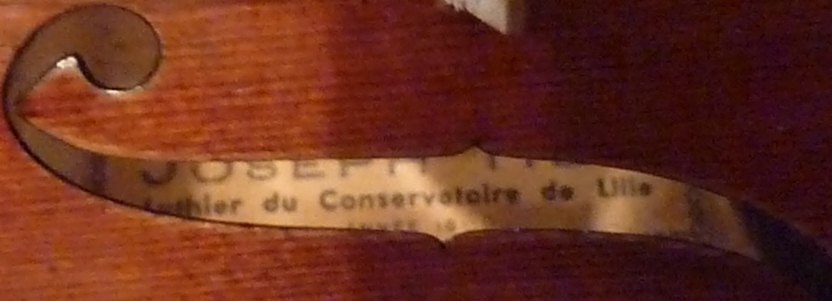
Content
Introduction
Bibliography
The Catalogue "La Collection Hel"
The Gold Medals
The Great World Exposition
in Paris 1889
An Unsolved Mystery?
Experience with Joseph Hel's
violins
Your opinions and
experiences
Guestbook
Impressum/Data protection
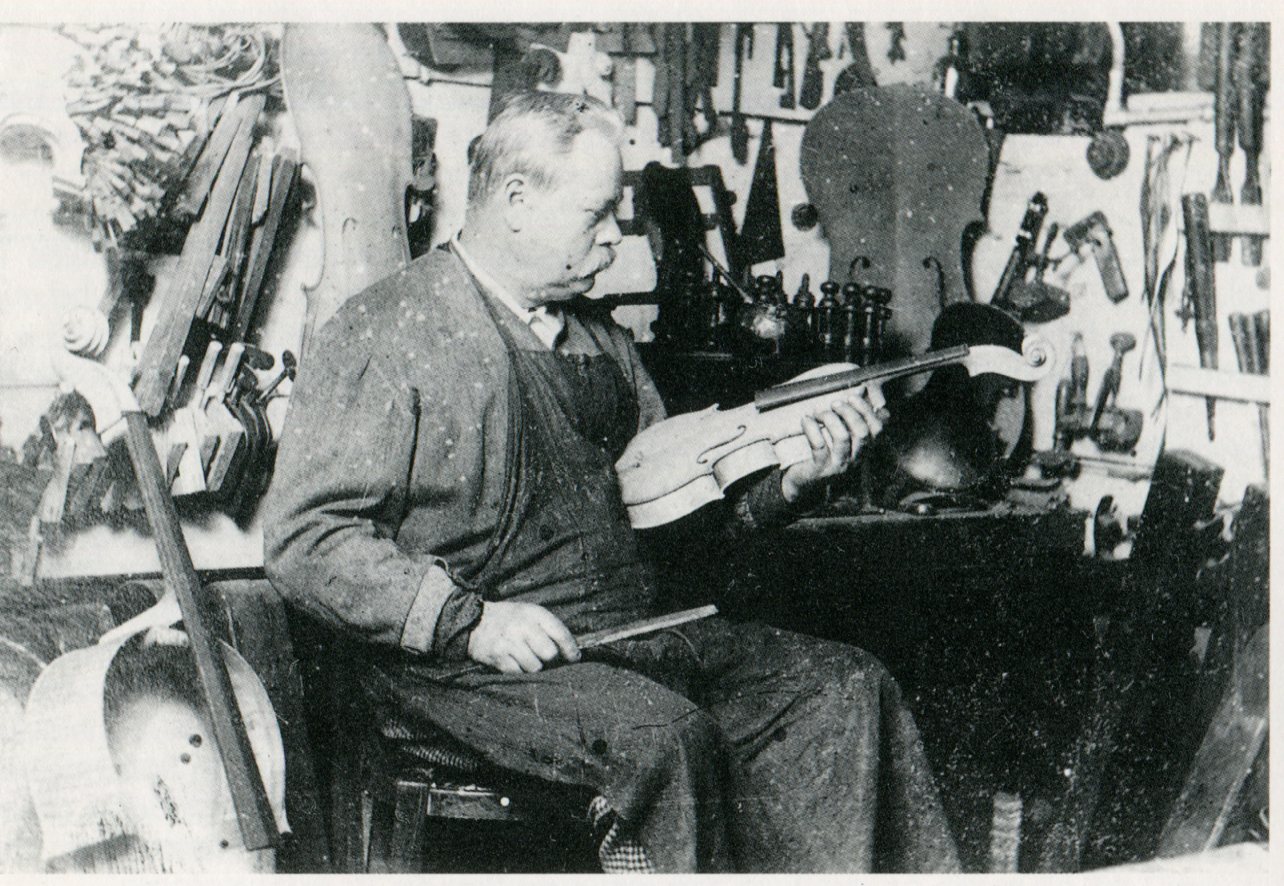
Jospeh Hel in his workshop, taken from the catalogue of the 1989 exhibition
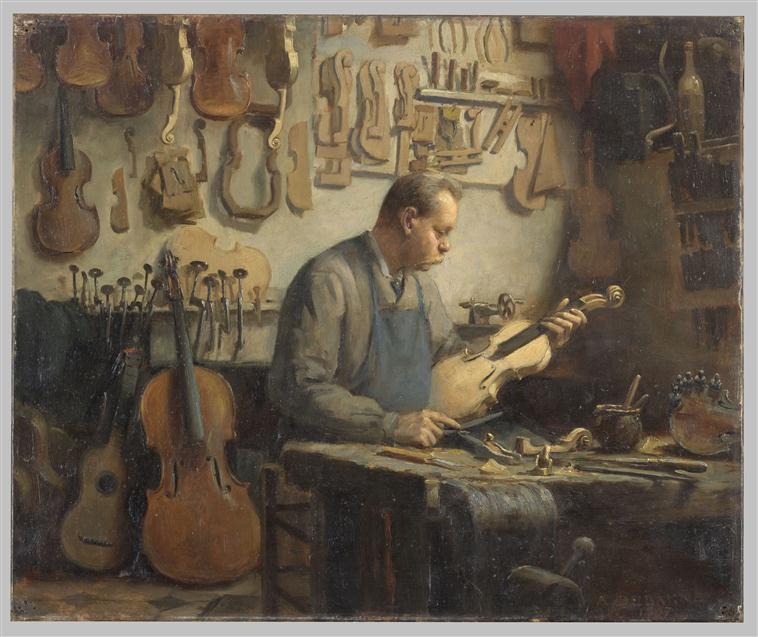
Painting of "Joseph Hel, luthier" by Debaene Alphonse-Jules (1854-1928)
Dépôt du Palais des Beaux-Arts de Lille, musée de
l'Hospice Comtesse. Dimensions: Hauteur : 0.38 m, Largeur : 0.46 m
Anyone familiar with their instrument and enjoying its wide range of expression
and sound is bound to have a more or less personal, or even friendly, connection
with it. We spend a lot of, hopefully pleasant, time together producing music
and making music with others, exploring strengths and weaknesses, and
experiencing the magic arising from being in concert with other instruments.
You don’t have to be, like me, a teacher of philosophy and physics to want to
know more. This search is not about dismantling the magic and displaying
scientific banalities but to become part of and perhaps enhance the magic. The
richness of interaction within an individual instrument is much too complex for us
to be able to put it into two dimensional „truths“. Knowledge of universal laws
of nature has not been sufficient to build good instruments, just as knowledge
of grammar alone does not guarantee a beautiful poem.
A violin maker copying old masters like Stradivarius or Guarneri does not
simply reproduce a product but will always endeavour to further development,
considering that more modern techniques –possibly even coincidentally – might
bring forth new end results; just the way evolution is known to happen. Subtle
changes occur over time, and once in a while an instrument emerges that stands
out and opens new doors in richness of sound and musical colour. This deep
understanding cannot be shared in books, it lives on often only as a felt sense
in those precious instruments that have survived.
Obviously I cannot add to this skill. I can only be grateful for and awed by the
beauty of those violins that this mix of solidarity and competition amongst
different violin makers, and the mix of learning and mastering, experience and
intuition, knowledge and skill in each of them can produce. The art of violin
making is intrinsically linked with the personality of the builder. You might
say the maker’s essence is captured in the instrument.
My research into Joseph Hel has taken me into obscure and little known places.
References to him seem short and scattered, often in texts regarding violin making in general, often even copied from each other. The aim of this page is
to bring all information together in one place and make my findings accessible.
During my research I have found many helpers amongst friends and acquaintances,
not to mention my sister who has done all the translation work.
I am always pleased to find comments or help in my mail box under
mail@gerhard-wansleben.de or on the forum www.violinist.com. Please use the
contact form.
Many thanks to everyone!
It goes without saying that the more proficient you are in either violin playing
or making the more you can truly appreciate the quality of an instrument. Those
that dedicate their lives to improving mastery of an exquisite instrument and
live through the highs and endless lows this brings may find that one day they
are able to fulfil its promise. Perhaps only with real skill in playing the instrument is it possible to get an
inkling of the skill and value inherent in its creation. I hope that my
collection of documents may be seen as enhancing, an addition to the mosaic
depicting the world of violins and their story.
Eugène-Auguste Ysaÿe
(* 16. July 1858 in Liege; † 12. May 1931 in Brussels) played the violin Joseph Hel
"Ex-Eugène Ysäye", 1899.
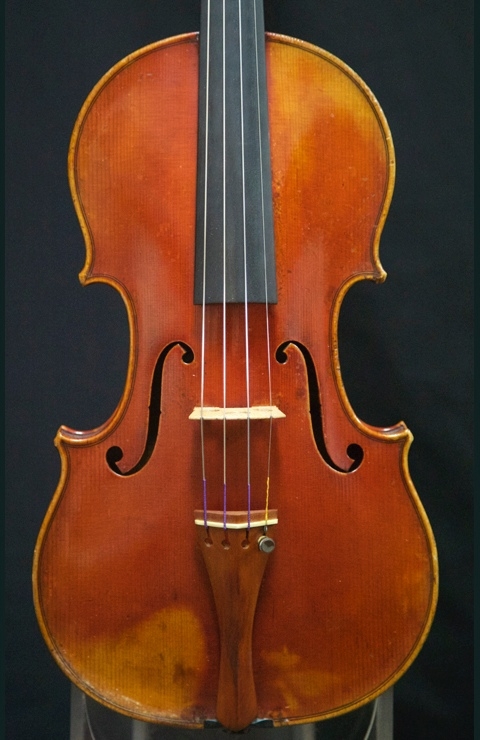
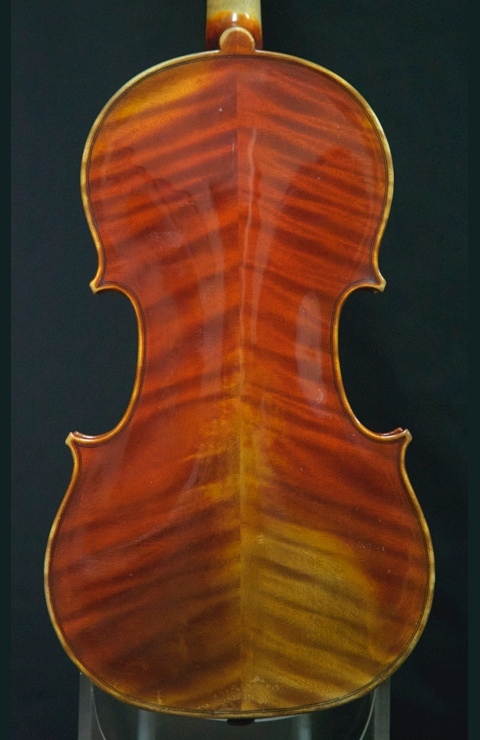
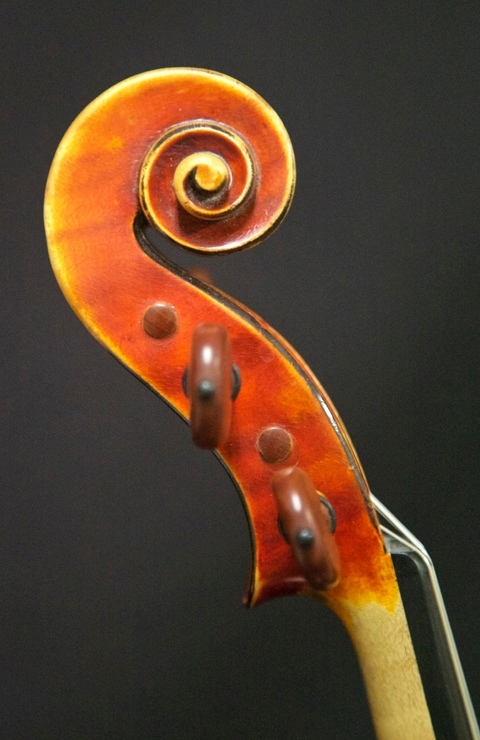
Description: Joseph Hel was born in Vosges, France in 1842. As a young man,
Joseph Hel was said to have repeatedly abandoned the sheep so he could he wander
off and see the violin makers in nearby Mirecourt instead. He was drawn to the
cradle of French violin making where he dreamt of life in a different world, a
musical world. In 1856, at the age of fourteen, Hel began his apprenticeship
under François Salzard. After seven years as an apprentice, Hel worked for
Sebastien Vuillaume before establishing himself in Lille in 1865.
Throughout his career, Hel never lost the enthusiasm for violinmaking that he
held during his youth. His constant search for information and progress led him
to creating innovative methods of making and repairing instruments.
According to the violin expert, William Henley, Hel’s craftsmanship and eye for
detail was near perfect. This particular violin was formerly the property of
Eugene Ysaye. Ysaye would frequently visit Hel’s workshop. We can imagine that
he eventually saw this violin in the shop and fell in love with it. A beautiful
back of the finest maple. A gorgeous, penetrating tone which is both rich and
powerful. Papers include letters from the widow of Eugene Ysaye, Jeannette Ysaye,
from June 7, 1950 and a sales receipt to the violinist, Remo Bolognini.
Certified also by Bein & Fushi as the “ex-Ysaye”.
Quelle:
http://www.benningviolins.com/Fine-Violin-Catalog-Fine-Violins-Sold-Joseph-Hel-Ex-Eugene-Ysaye-Violin.html
Back to top
My most important source is the book "Die Geigen- und
Lautenmacher, Band 1" by Willibald Leo Freiherr von Lütgendorff written in 1922,
exactly 20 years after J. Hel’s death, but during the lifetime of his no less
important son Pierre Joseph Hel.
"Willibald Leo Freiherr von Lütgendorff-Leinburg (* 8th July 1856 in Augsburg; †
31st December 1937 in Weimar) was a German painter, art historian and teacher
specialising in late 19th and early 20th centuries. From 1901 he was director of
a department in the Lübeck’s “Museum am Dom“.
His achievement in writing a book on violin making has not been surpassed. He
also established a collection of historic musical instruments, which is today in
the St Annen Museum in Lübeck.The St Annen Abbey was originally lived in by
Augustine nuns. Today it constitutes part of the Lübeck Museum for Art and
Cultural History.
Quelle: https://de.wikipedia.org/wiki/Willibald_Leo_von_L%C3%BCtgendorff-Leinburg
Comparatively modest. Note with the page 250 for example.

Biography of Joseph Hel - John Dilworth
HEL, Joseph (Pierre Joseph) Born 1842 Mazirot, Vosges, died 1902 Lille France.
Apprenticed to Salzard at Mirecourt for seven years. Worked for two years with
Sébastien Vuillaume, and for N. Darche at Aix-la-Chapelle 1864. Established
independently in Lille from 1865. Carried out restoration work for Lille
Conservatoire and for the Glasgow dealer David Laurie from c.1880. Numerous
awards at various European and American exhibitions. Made an officer of the
French Academy. Credited with over 800 instruments. Very superior copies of
Stradivari and Guarneri instruments in the Vuillaume style. Sometimes branded
above the endpin: ‘J. Hel à Lille’.
Quelle:
http://www.amati.com/maker/hel-joseph-pierre-joseph/
Biography of Joseph Hel - Cecie Stainer
b. Feb. 8, 1842, at Mazirot, near Mirecourt (Vosges). Was apprenticed for seven
years in Mirecourt, was then for two years with Sebastien Vuillaume in Paris,
and for a year (1864-5) with Nicolas Darche at Aix-la-Chapelle. In 1865 he
started his own business at 14, rue Nationale, Lille. He was an excellent
workman and made all his instruments himself; the pattern is very beautiful ;
the tone is good; he used oil varnish ; all the details are carefully finished.
He also showed great skill in repairing old Italian instruments. He had a
special method of seasoning the wood he used, removing, without the use of fire
or acids, every element that interferes with the tone. In 1886 he invented an
ingenious method of fixing the pegs, which enables the strings to be gradually
tightened, and prevents their suddenly running down; the shape of the head
remains the same. Was awarded: gold medal, Lille, 1882 ; diploma of honour, St.
Omer, 1884 ; gold medal, Antwerp, 1885; gold medal, Liverpool, 1886; gold medal,
Paris, 1889 ; a member of the jury at the Münich Exhibition, 1893, consequently
unable to compete; the same at Chicago, 1893; and at Bordeaux, 1895. Made "
Officier de l'Academie" and " Luthier to the Lille Conservatoire." He died 1902.
Quelle:
http://www.amati.com/maker/hel-joseph-pierre-joseph/
Joseph Hel: a great violin maker in Lille, France, late 19th century. On his life and work
As a young man, Pierre- Joseph Hel was said to have repeatedly abandoned the
sheep he had to herd near his hometown of Mazirot; he wandered off so he could
see the violin ateliers in nearby Mirecourt instead. He was drawn to the cradle
of French violin making where he dreamt of life in a different world, a musical
world.
In 1856, at the age of fourteen, Hel began his apprenticeship under François
Salzard (1808-1874), from whom he learned the fundamental secrets of French
violin making how to use good woods to craft solid and resonant violins
patterned after the Stradivari model, the very kinds of instruments which made
the ateliers of Mirecourt a success and put the town on the map.
Having grown beyond the workshop where he trained, Joseph Hel later worked under
Victor Poirot and Grandjon in 1861 before gradually making his way to
Laberte-Humbert. The company that was founded in 1780 was managed by Maurice
Emile Laberte (1856-1898) and had begun an unparalleled phase of expansion that
lasted for over 50 years. Propelled by the restless thirst for knowledge that
defined so many outstanding violin makers, Hel moved on in 1862 and ended up in
Paris working for Sébastien Vuillaume, the youngest member of the famous family
of luthiers. Subsequent brief stints under E. Henry-J. Martin in Paris as well
as Nicolas Darche in Aachen gradually led Hel back to Laberte-Humbert. By this
point, he was an extensively trained and highly experienced young master and
only remained at the workshop for another year before accepting the advice of
the legendary Jean-Baptiste Vuillaume and founding his own atelier in Lille in
1865.
With this step forward, Joseph Hel advanced to become one of late-era
Vuillaume's most important contemporaries as well as one of the most prominent
French violin makers in the latter half of the 19th century. Some of the bows
that feature his stamp which in part have miniature portraits on the eye of the
frog cannot be definitively attributed to Hel. However, even though their
provenance is not fully resolved, these bows nevertheless remain outstanding
pieces patterned after Charles Nicolas Bazin's work, and they certainly
demonstrate Joseph Hel's extremely demanding standards.
As a violin maker at the conservatory in Lille, Hel remained in constant contact
to musicians who filled him with inspiration in terms of technical innovations.
For example, he learned to improve his approach to drying tone woods, and he
crafted a peg box with a shape which made very refined and very stable tuning
possible. In keeping with the violin-making tradition dating back to Lupot, the
joy that Joseph showed in experimenting with classic Italian models was not
unusual for his day. His artisanal craftsmanship yielded instruments that were
not only daring and innovative: they were always musically and aesthetically
perfect as well. These pieces set new standards that were imitated and adopted
by later generations of French violin makers.
His highly appropriate sense of self-confidence led Hel to
distinguish between
his own numbered master instruments and violins made in his atelier; he used
several stamps and signatures, some of which he concealed.
Joseph Hel died at
the age of sixty in Lille on 14 March 1902, and his impact on employees and
students endured for ages to follow. Those who were influenced by his work
include important figures in modern European violin making such as Léon Victor
Mougenot, Auguste Marissal and Karel Boromäus Dvorak – but also Joseph Hel's son,
Pierre Jean Henry Hel (1884-1937), who went on to become his worthy heir.
Quelle:
https://www.corilon.com/shop/en/info/joseph-hel.html
Joseph Hel's great great grandson, Thierry Coisne, has provided additional
insight into his family's story. I am very grateful to him.

Back to top
A recent source of mine
is a catalogue listing the „ Collection Hel“, which was shown in Lille between
Dec 2nd 1989 to April 2nd 1990,- pretty much exactly 100 years after the Great
Paris Exhibition. I was able to purchase it on the antique market. In there I
found the following pictures and texts.
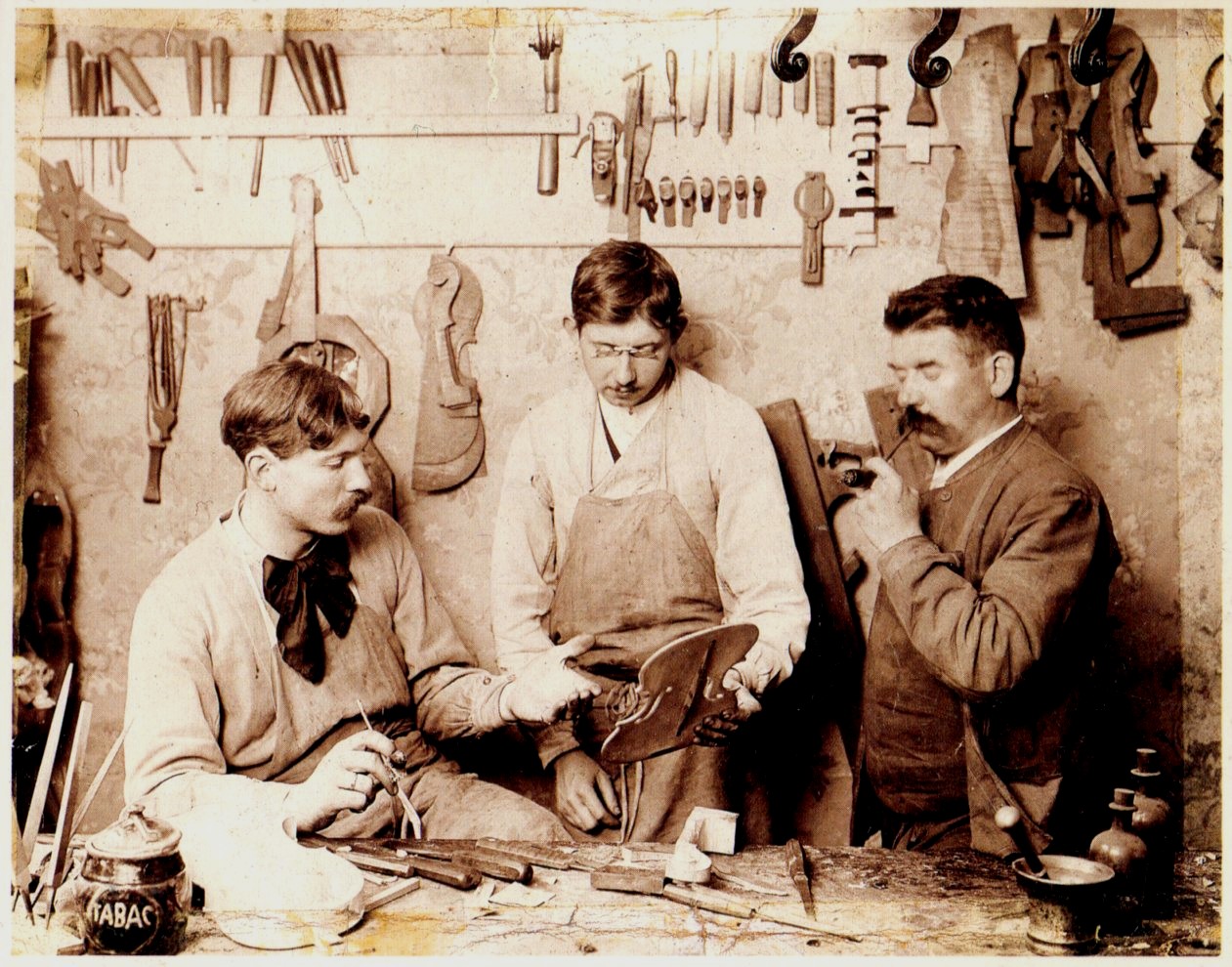
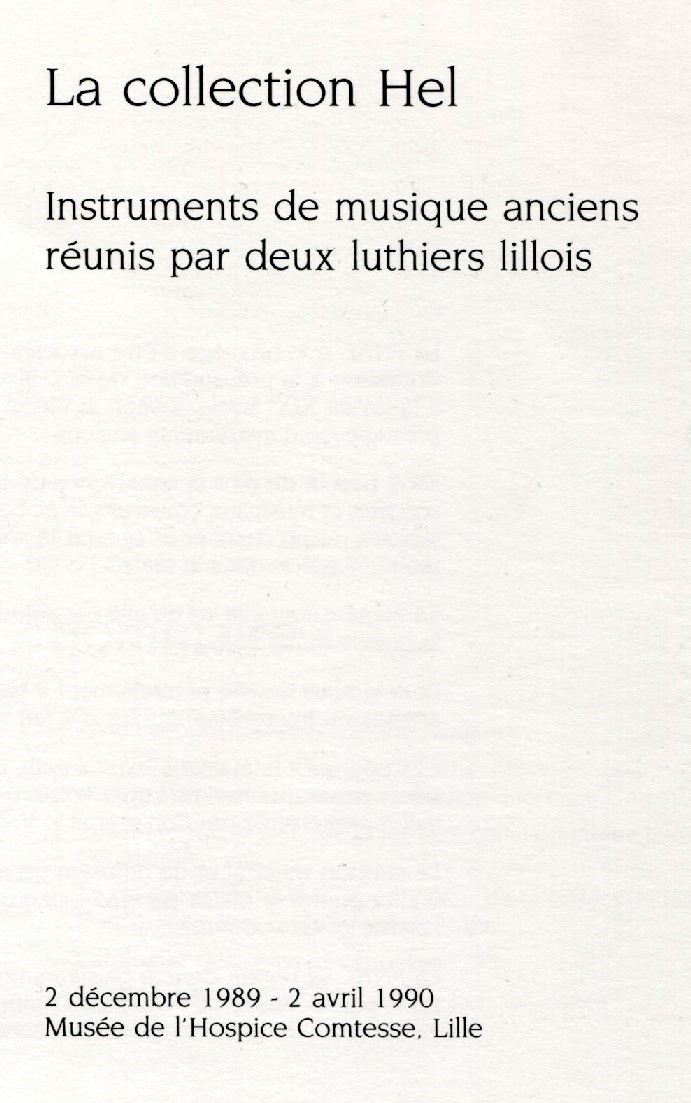

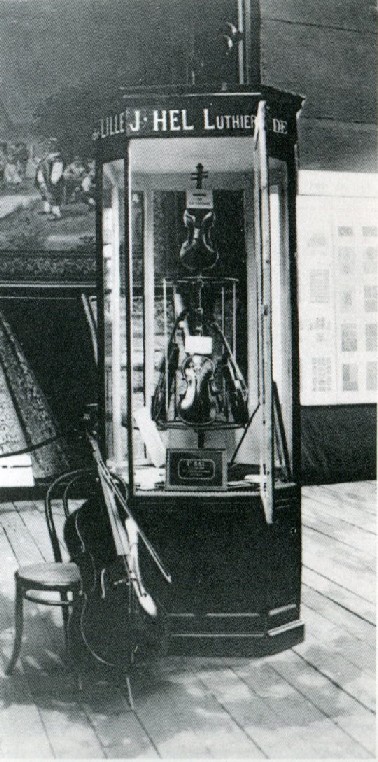

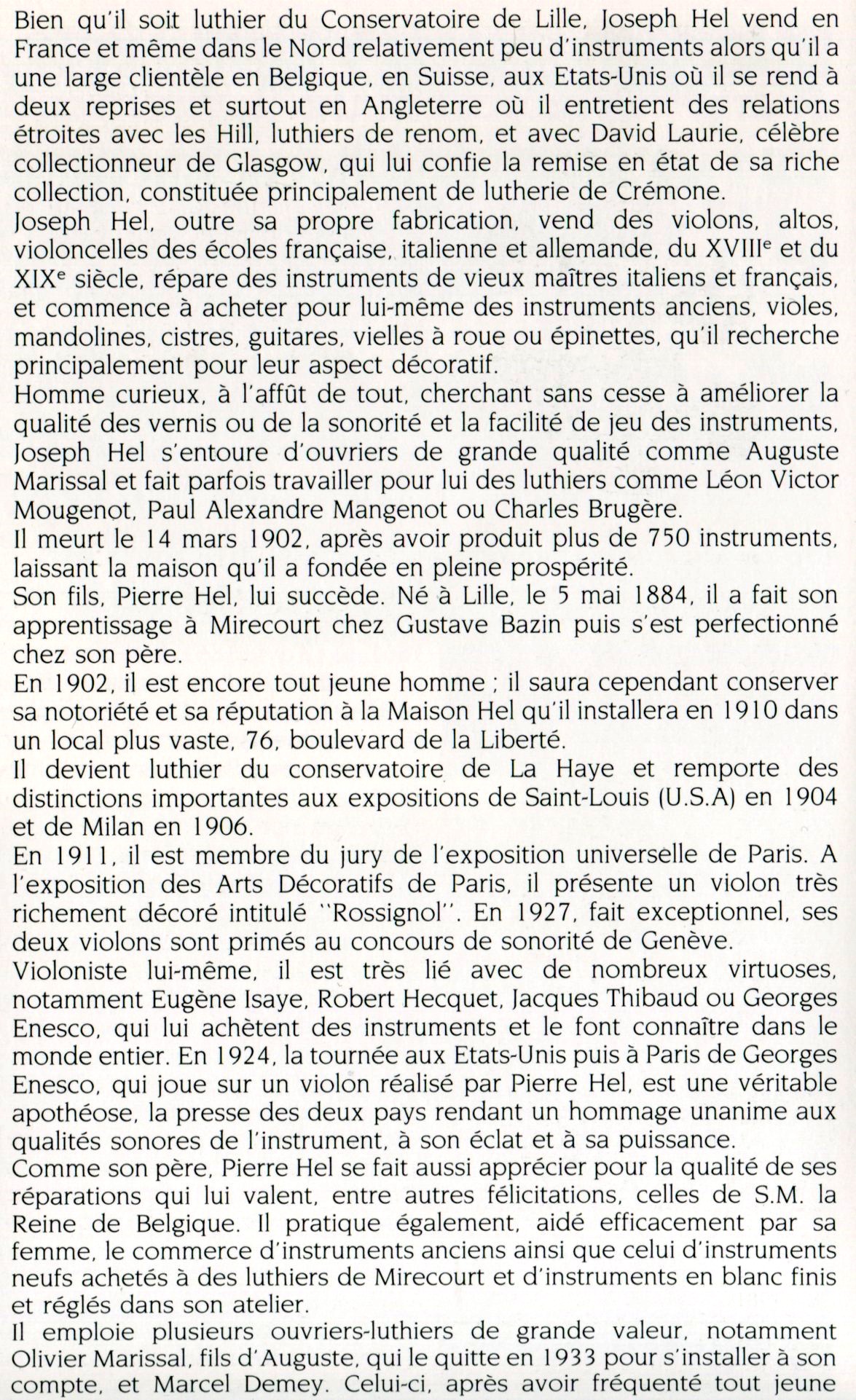
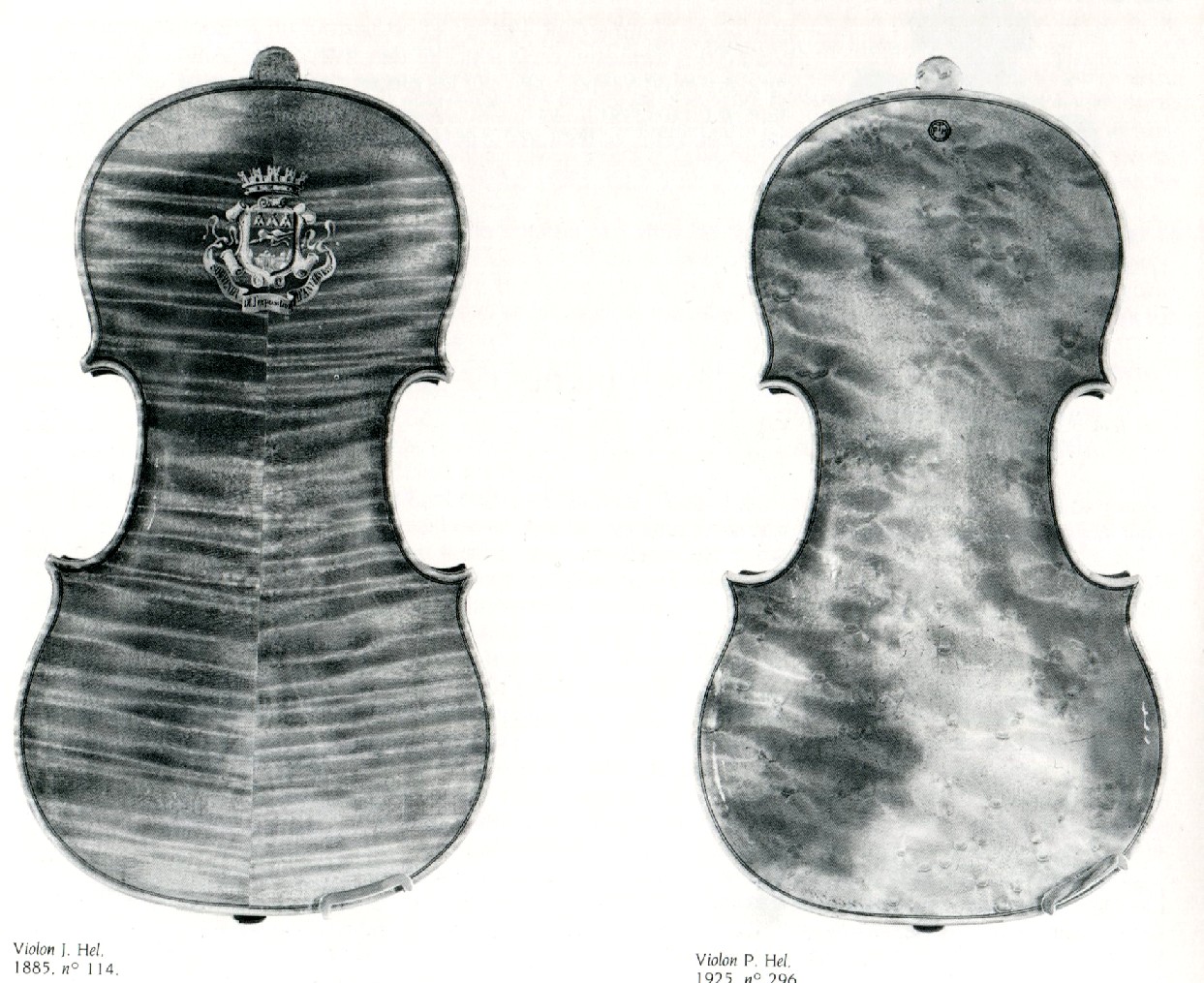
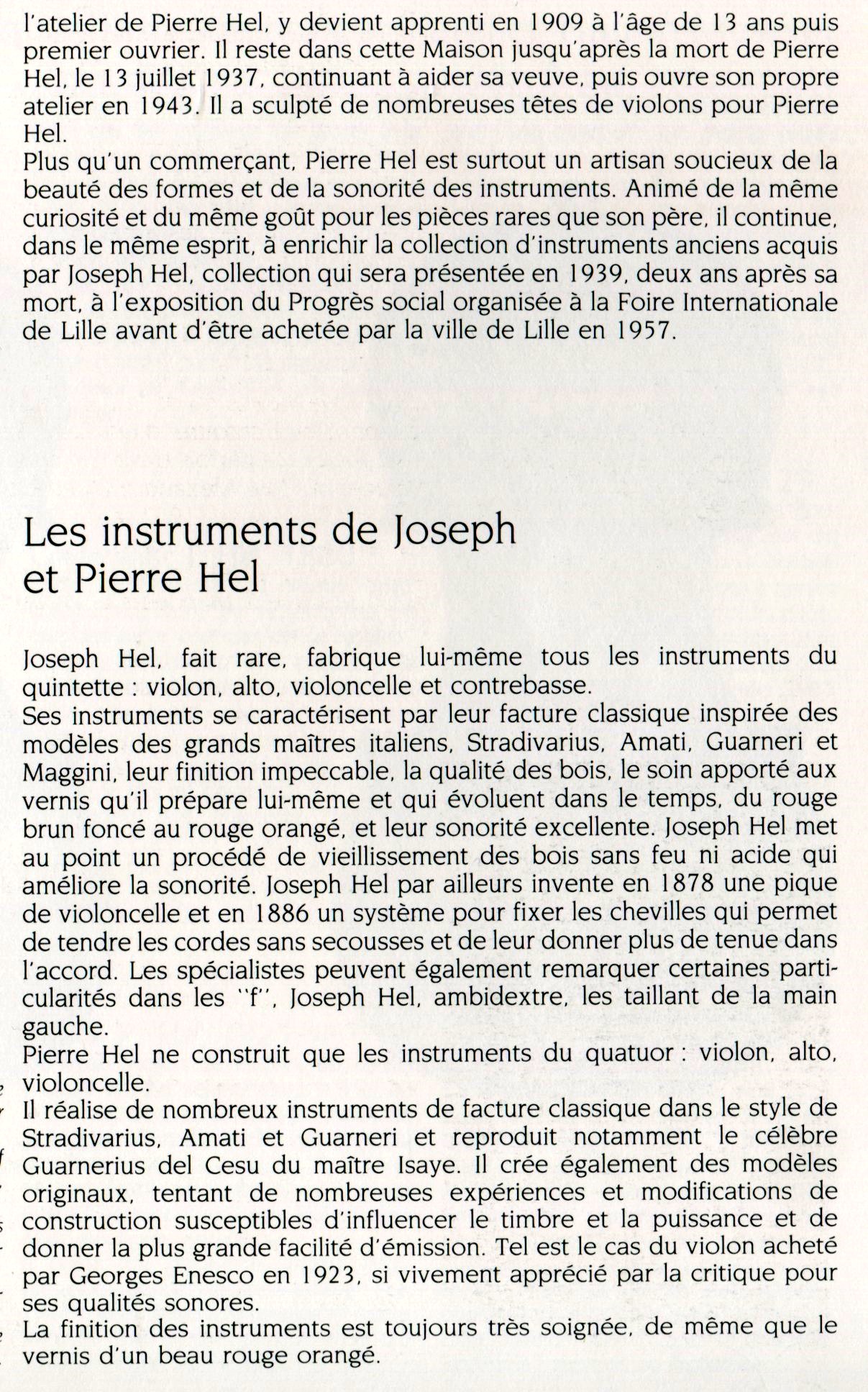

This catalogue only shows one of Hel’s violins made in
1882. There are many old violins and lutes, even woodwind instruments.This
exhibition was plainly not primarily dedicated to string instruments made by
father and son Hel.

This letter found in the city archives of Lille seems to have triggered
the exhibition 'Collection Joseph Hel' at the museum in Lille.

In this letter Joseph Hel's two granddaughters

offer their father's collection of old instruments to the mayor of Lille.
From 1937 Piere seems to also have been a successful
dealer of antique string instruments and bows.
https://www.corilon.com/shop/de/info/pierre-hel.html
Back to top
I have come across some very interesting information concerning the three gold
medals J. Hel was awarded in Antwerp 1885, Liverpool 1886, Paris 1989. In short,
it looks like he did not have to face direct competition in order to win those.

During the Paris exhibition he had been invited to present his instruments
representing outstanding craftsmanship in his home nation. Both, the Antwerp
exhibition (Exposition universelle de 1885) and the International Exhibition of
Navigation, Commerce and Industry in Liverpool, England, opened by Queen
Victoria May 11th 1886, were not conceived as competitions.
In Antwerp 25 nations documented their skills and productivity to 3.5 million
visitors on an area of 220000 square meters for 6 months. Many of those
then merely moved from Antwerp to Liverpool. Here there were “one and a half
thousand UK exhibitions and several hundred international exhibitors”.
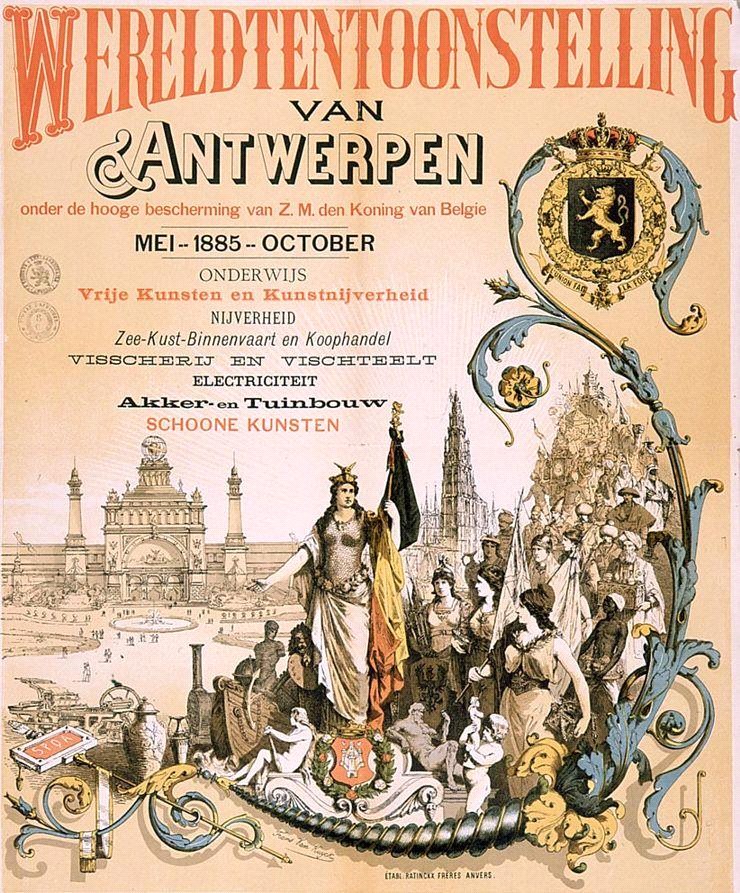
According to the Liverpool Archives J. Hel exhibited in the department Foreign
Exhibits, galleries N, O and P under France: Hel, Joseph, 14 Rue Nationale,
Lille. Looking at the numbers of exhibitors it gives pause for thought
concerning the value of those medals to read that 500 gold medals, 1000 silver
and 1500 bronze medals were handed out.
Joseph Hel is listed here as one of the foreign
exhibitors in halls N, O and P.
Top right corner: Italy presents its produce in Gallery N;
France, Belgium and Norway are in the rooms O, Q, R
and S, as are Sweden, Spain, Haiti and Chile.
Back to top
The Great
World Exhibition in Paris 1889
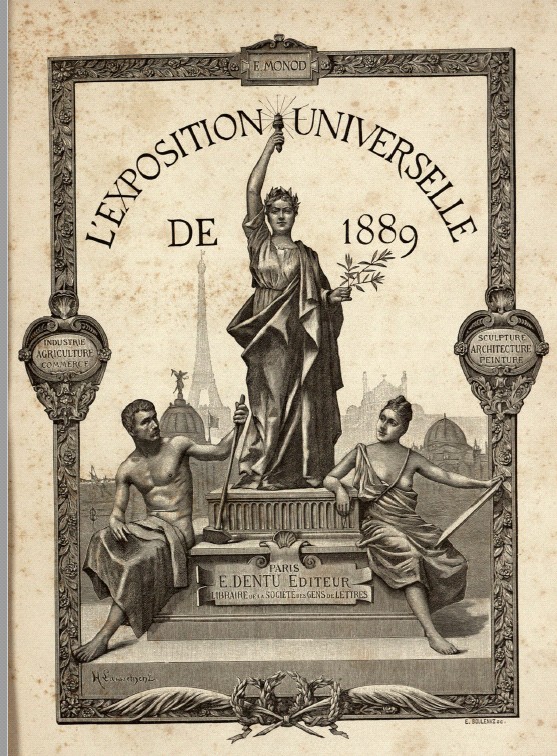

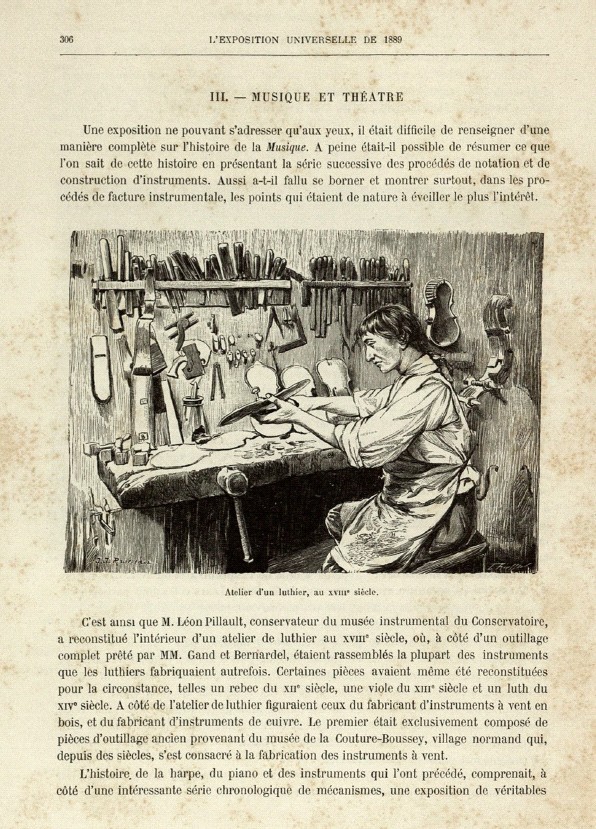

At the University of Heidelberg library I have found a catalogue by E. Monod
about the Great World Exhibition in Paris 1889. In there it is confirmed that
the master Joseph Hel received in the department Les Instruments de Musique the
honour of a gold medal for the instruments forming his String Quartet, those
being “elegant copies of great Italian masters”. We can assume they were
Stradivari and Guarneri models.
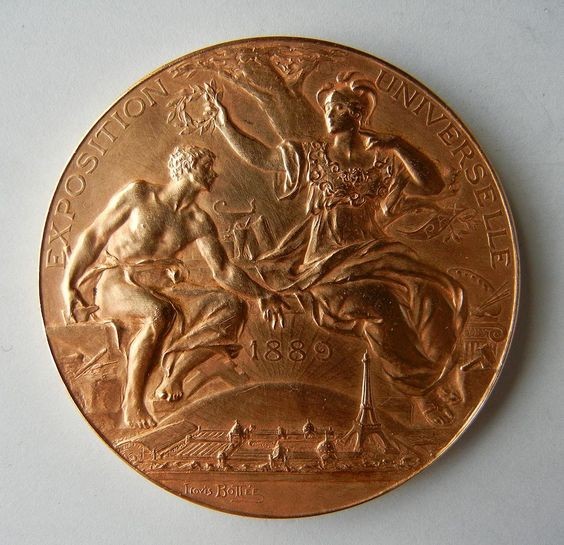
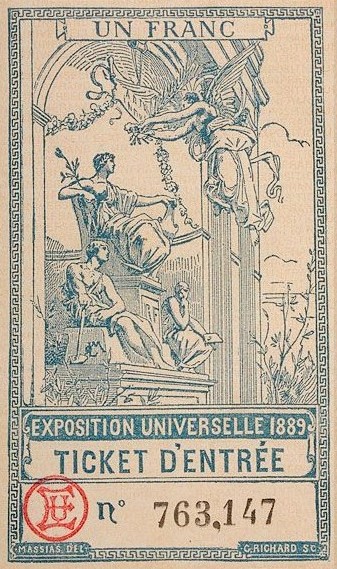
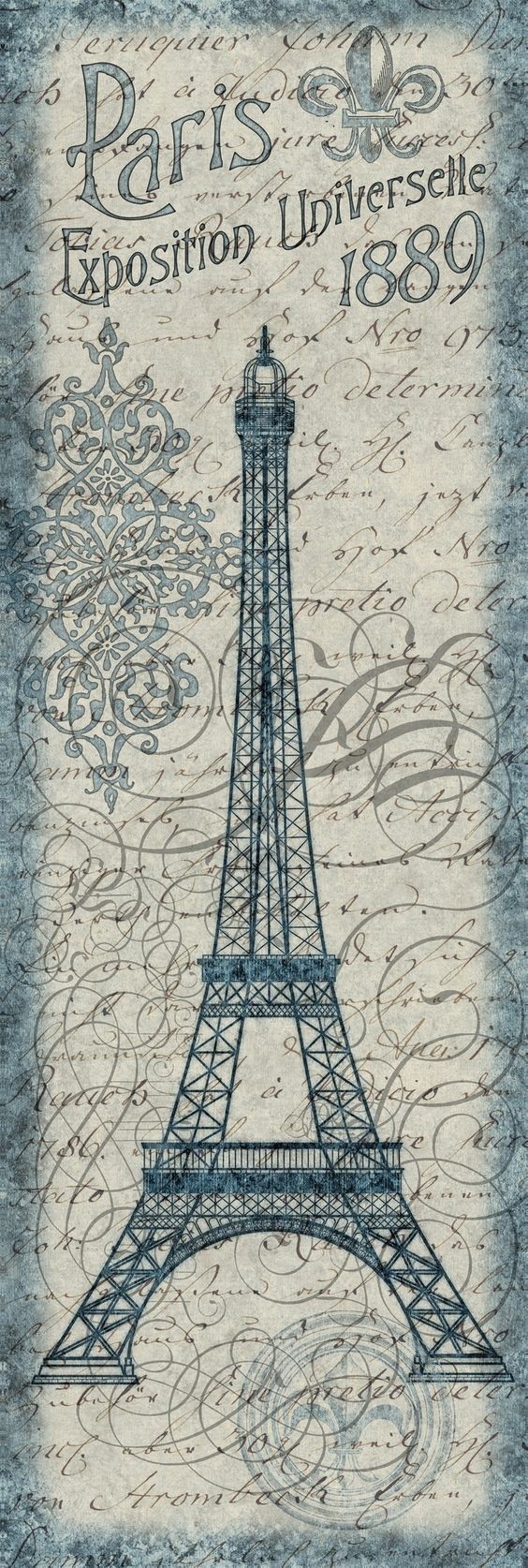
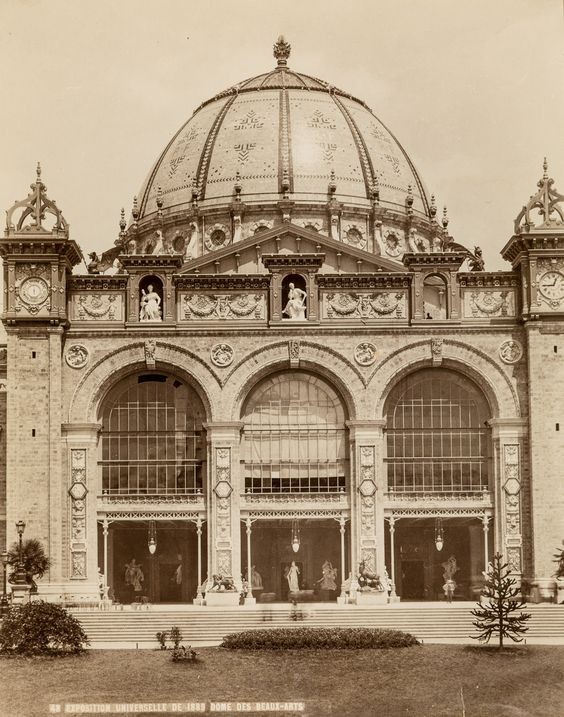
Palais des Beaux-Arts et des Arts libéraux
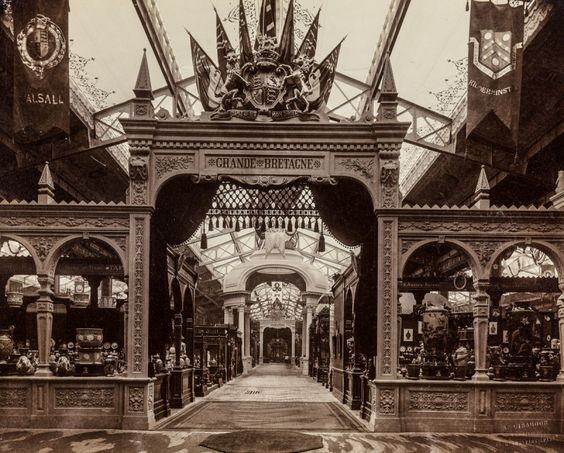
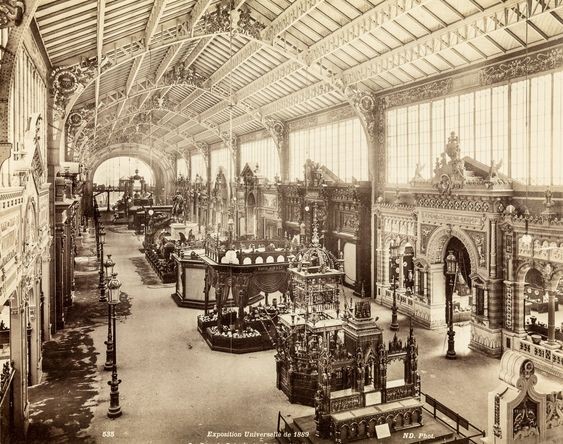
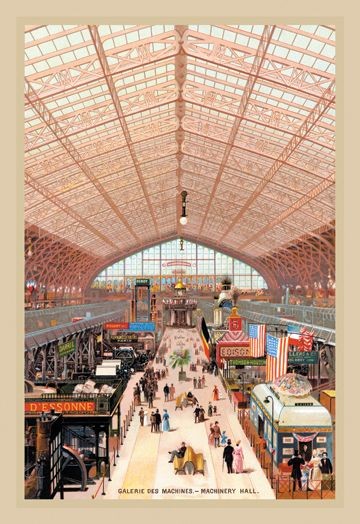
Exhibition rooms, Paris 1899

Proof of the triumph in Paris is documented
on the workshop window, 14, rue National, Lille.
Back to top
The reason for my research, the violin “Joseph Hel, Luthier du Conservatoire du
Lillie 1884, may well have been part of those exhibitions. This would make sense
considering it had been completed shortly before. Obviously that alone does not
yet guarantee its quality. It might just be that he simply built it because he
did not want to present two Stradivaries. Therefore he may have signed it in a
rather low key fashion to avoid drawing too much attention to it. Certainly
during the Paris Exhibition it might have seemed to be tempting providence to
present it with already existing medals. Again, the question arises: what were
the criteria for handing out the new medals? There were 61.277 exhibitors, maybe
a few other string
instruments, so what would his violins be compared with? Possibly he even kept
quiet regarding his previous medals, rather than risk ending up in Paris with
empty hands.
But this is only conjecture. At least we now understand a bit more what these
medals really represent in the context of an exhibition of commerce and not of
musical instruments. Without putting them into context, they do look very
impressive in his biographies. “Honi soit qui mal y pense” (Shame on him who
thinks ill of it) is the inscription on the British Order of the Garter.
Back to top
The medals from Antwerp and Paris are not shown consistently on the labels.
Identifications of violins are never the same in any two instruments. Why would
that be?
The thought that perhaps this was Hel’s private way to classify his own master
instruments and violins may be valid for the period after 1890. (See
above: "to distinguish between his own numbered master instruments and
violins made in his atelier; he used several stamps and signatures, some of
which he concealed") This was the time when he sold a lot more instruments and
he may well have taken on a lot more staff, possibly making it necessary to have
a private system to distinguish instruments from each other.

However, this thought does not seem to justify the fact that he did not
consistently name medals on his violin labels. A possible explanation for this
may be that he did not document those medals that were already included in
additional stamps and markings anyway.
Here some examples from the Cozio-Archiv
Quelle: https://tarisio.com/cozio-archive/browse-the-archive/makers/maker/?Maker_ID=1838
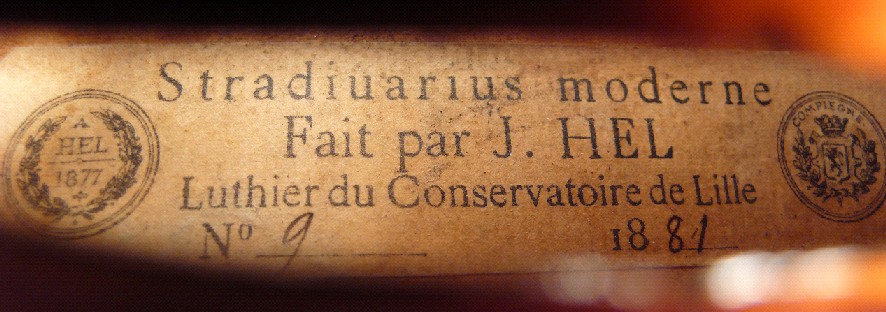
In the following chronological list I have shown in colour for each violin label
whether it documents his
exhibitions,
medals and/or his work at the conservatoire.
There does not seem to be a system that I can detect. The marking seems to be
rather random.
Violine 1883 labeld “Stradivarius moderne, Fait par J.
Hel, Luthier du Conservatoire de Lille, No. 43, 1883, Grande
Medaillen
d'Or"
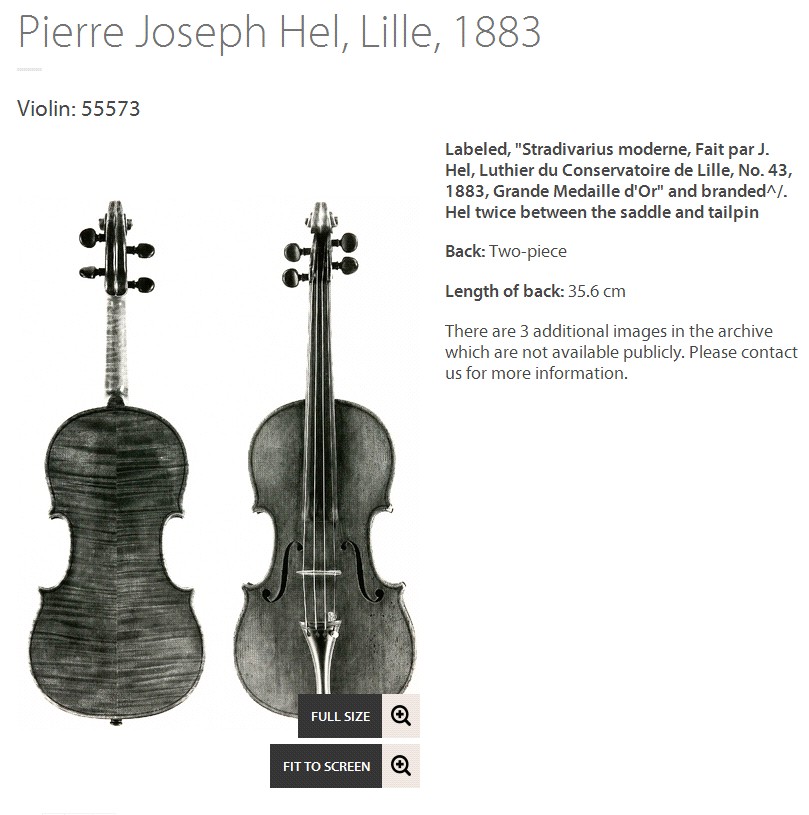
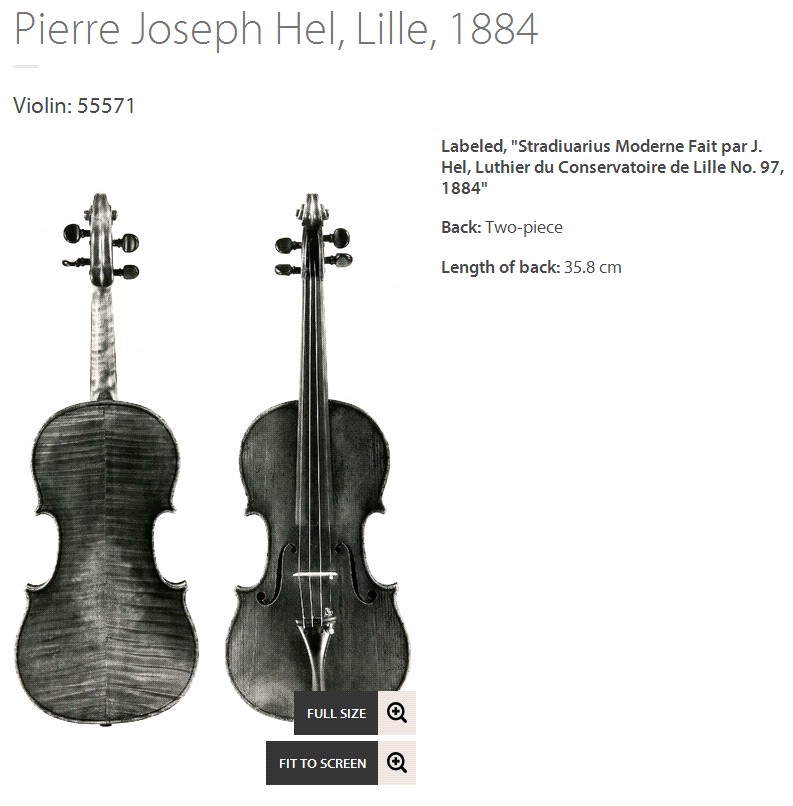
Violine 1887 labeld "JOSEPH HEL, LUTHIER A LILLE 1887,
MEDAILLEN D'OR" inscribed on the inner back and the maker's brand "J. HEL"
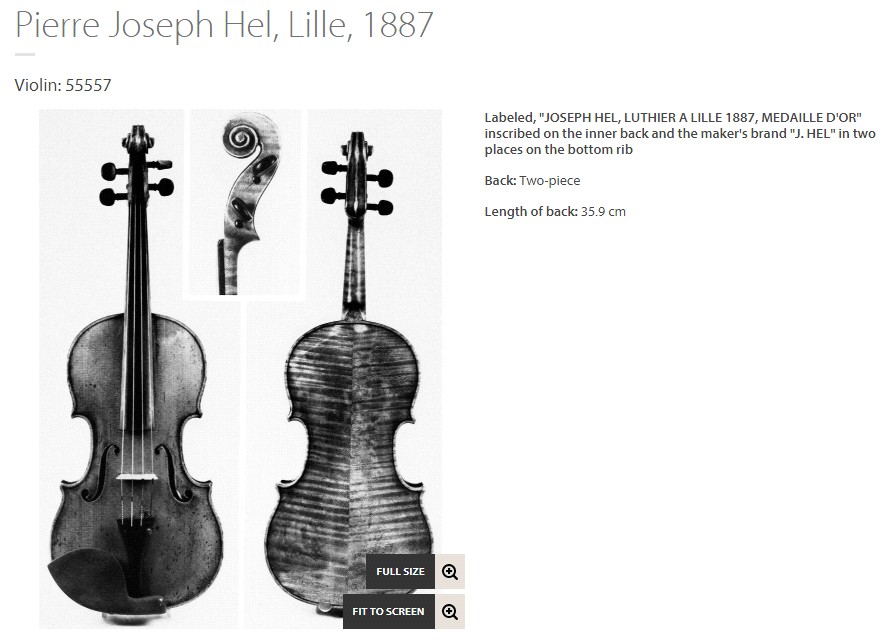
Violine 1888 labeld "Joseph Hel Luthier a Lille 1888" and
inscribed internally in the lower back "Fait par J. Hel, luthier du
conservatoire de musique de Lille, N° 170"
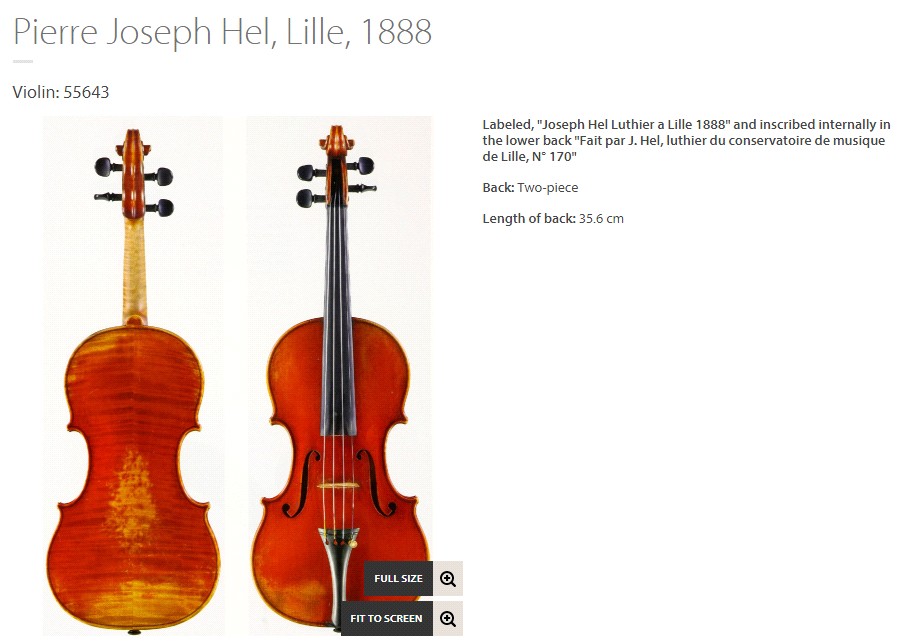
Violine 1888 labeld "Exposition d Anvers 1885,
Medaillen
d'Or, Stradivarius Moderne fait par J. Hel, Luthier du
Conservatoire du Lille no.
160"
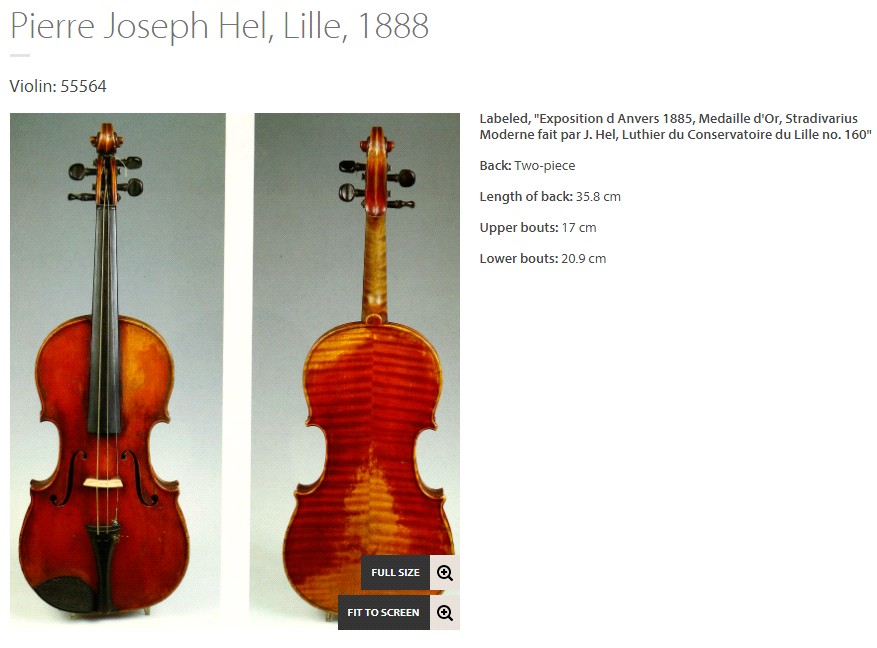
And than, in the same year 1888 "Stradiuarius moderne, Fait
par J. Hel, Luthier du Conservatoire de Lille, N" 155 1888", and branded above
the label "Exposition ****** 1888,
Medaillen
d'or"
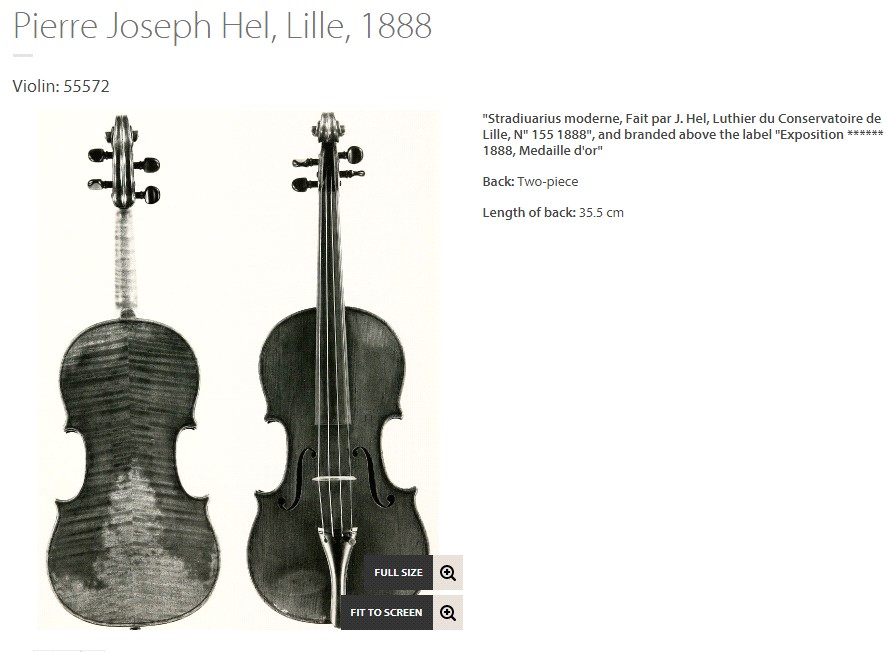
Violine 1890 labeld only "Joseph Hel, Luthier a Lille
1890." Branded on the lower rib: "J. Hel." and numbered internally 236.
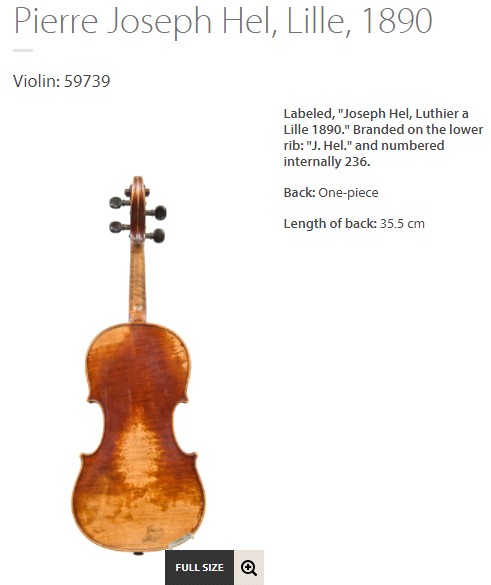
Two years later, 1892, "Joseph Hel, Luthier a Lille
1892" and numbered in ink 295 and signed "Conservatoire de music de Lille, 14
Rouge National". Branded internally "Exposition universelle, Paris 1889
Medaillen
D'or"
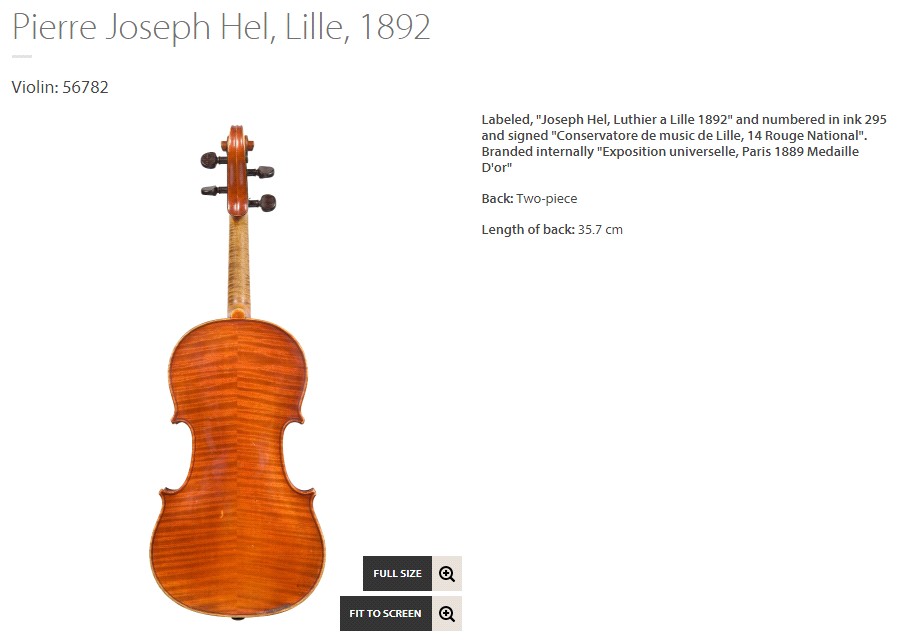
1894 stamped to the inside back "Exposition Universelle
Paris 1889 Médaillen
D'or." Inscribed to the inside back, "363." Branded to the
lower ribs, "J Hel."

1899 rather modest "Joseph Hel Luthier a Lille 1899",
inscribed "Fait par J. Hel No.496 1899 J. Hel" and branded "J. Hel" by the
tailpin
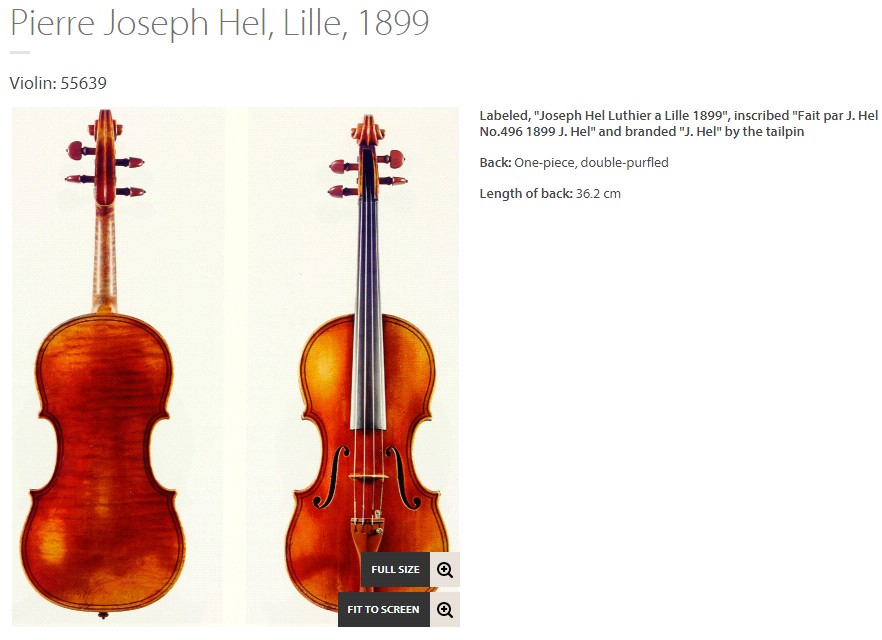
But than in 1901 in all detail "Joseph Hel, Luthier a Lille, 1901"
and "The Rudolph Wurlitzer Co., Experts in Old Violins, Registered No. 848." Ink
stamped to the inside back, "Exposition Universelle Paris, 1900, Grand Prix." Branded to the lower rib, "J Hel a Lille." Signed to the inside back, "Fait par
J. Hel à Lille, 1901, No. 596."
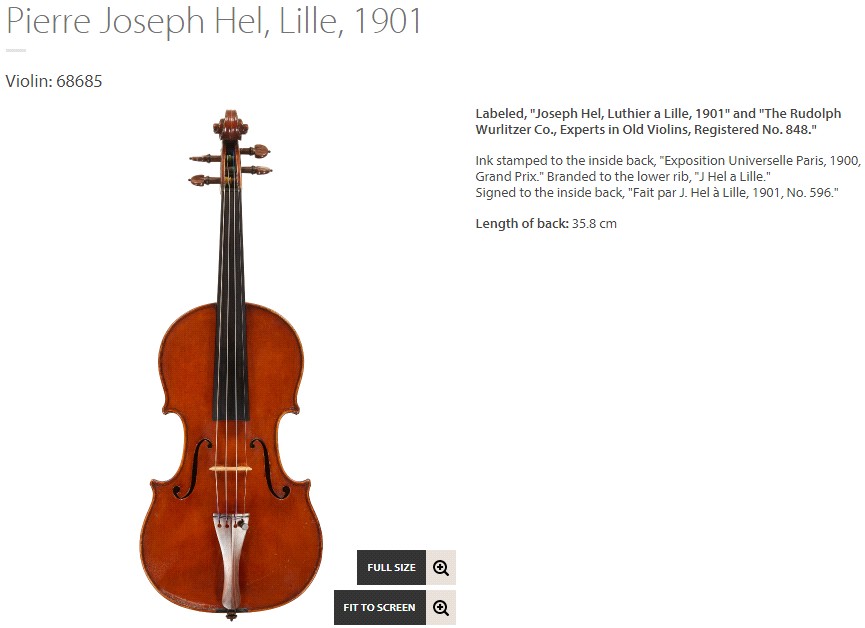
Also 1901, but only saying "Joseph Hel Luthier a Lille 1901",
inscribed "Fait par J. Hel a Lille, 1901, N° 579 J. Hel" and branded "J. Hel" by
the tailpin and in the mortice of the pegbox
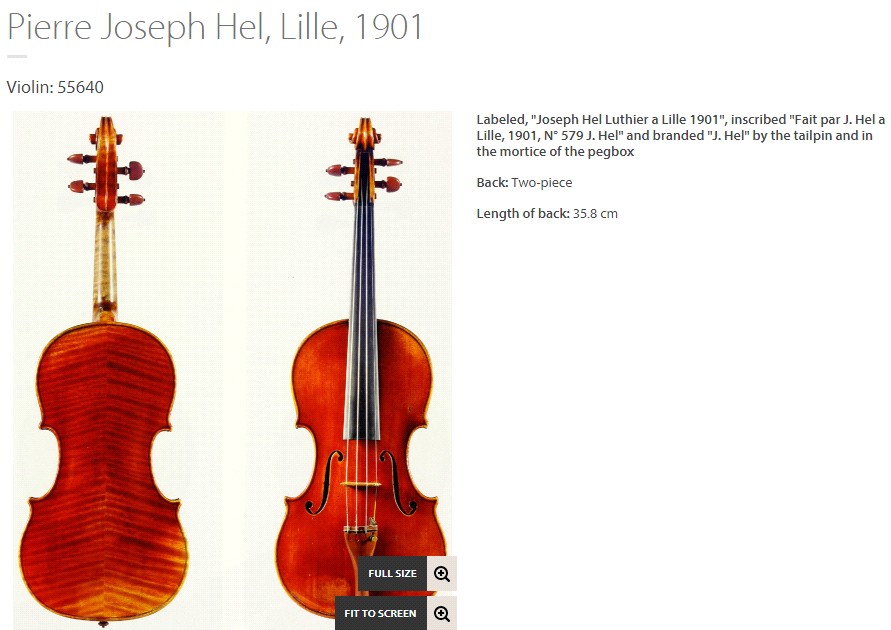
Another one from 1901 marked as "Joseph Hel, luthier a Lille 1901",
inscribed 599 internally on the back and branded "J. Hel a Lille" by the tailpin
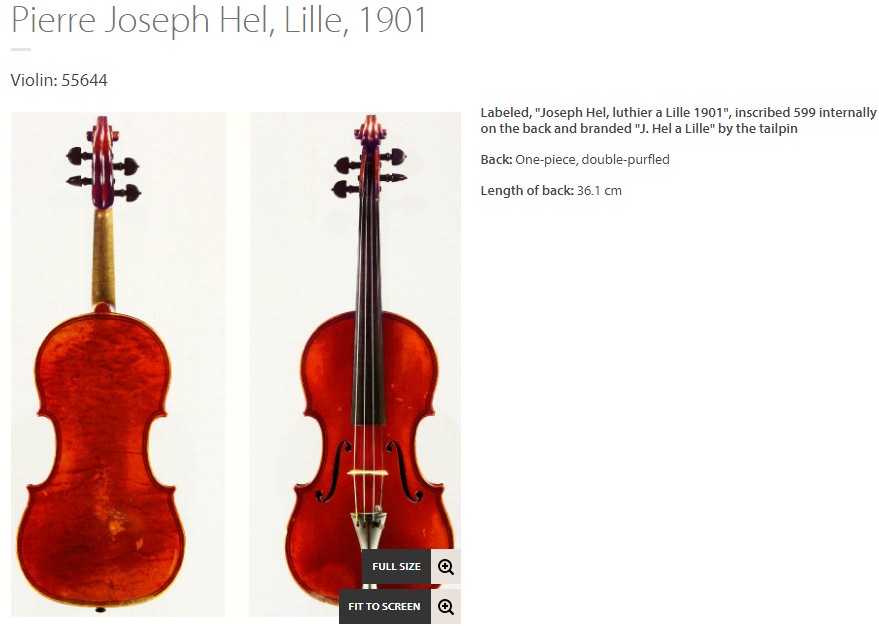
Die Kennungen
Ausstellungen,
Medaillen und/oder
seine Anstellung am
Konservatorium
kommen immer wieder vor, mal hier oder dort in beliebigen Kombinationen - und
manchmal auch gar nicht. Das sind natürlich nur Stichproben, die sich auf die
Genauigkeit der Angaben in diesem Archiv stützen.
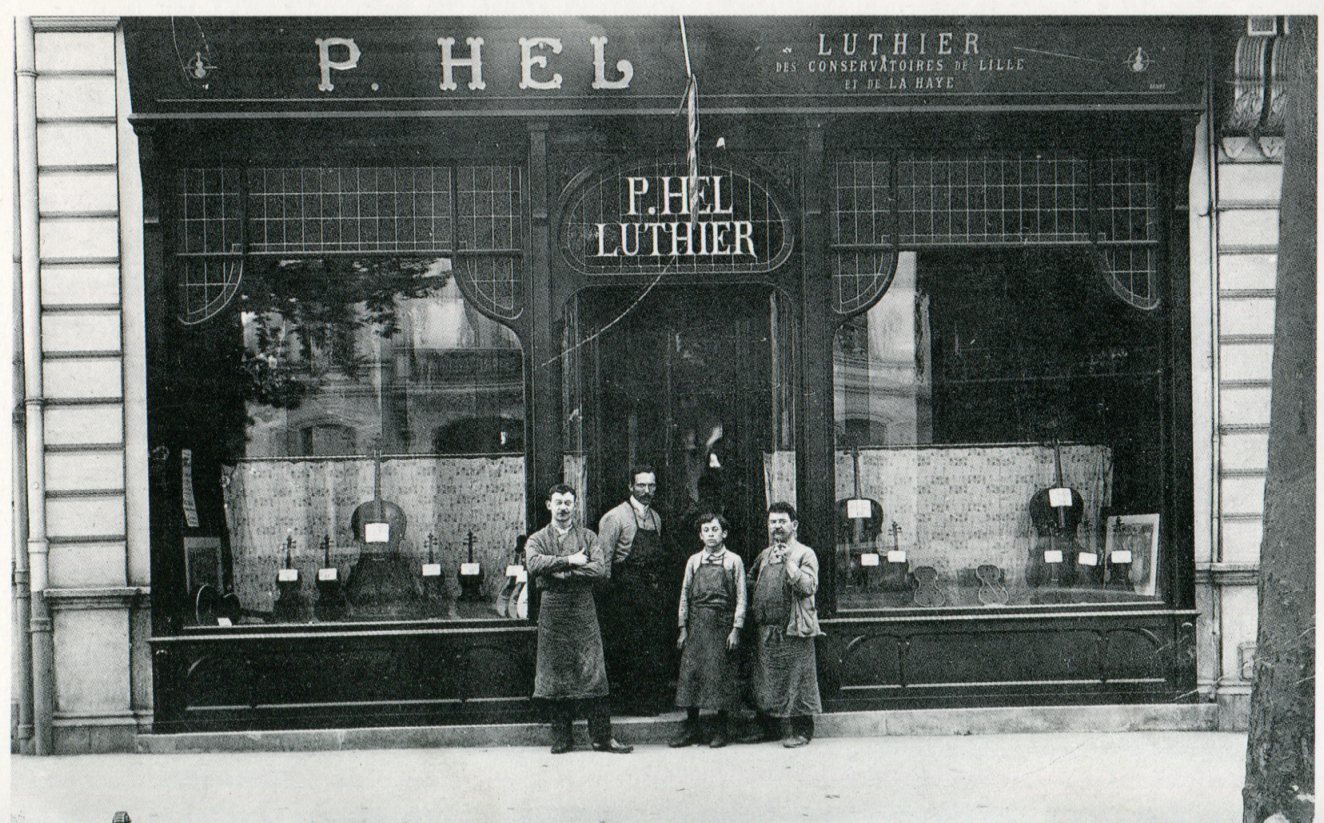
These pictures of their workshop front shown in the catalogue 1989 demonstrate
how much value father and son Hel placed on their cooperation with the
conservatoire.
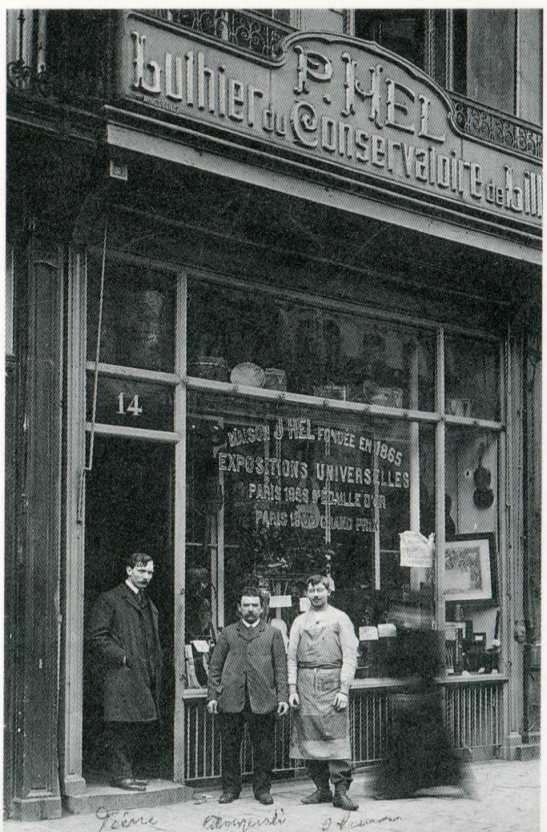
Those data are taken from the auction catalogue of Tarisio. Here Wikipedia about
the auction house Tarisio:
"Tarisio Auctions is a web-based auction house that specializes in string
instruments and bows. Founded in 1999 with locations in New York and London, its
online auctions provide a global marketplace for musical instrument sales...
Tarisio's New York offices and gallery are at 244–250 W 54th Street, in the
former workshop of prominent French violin dealer and
restorer Jacques Français.
Français was joined in 1964 by fellow French luthier René A. Morel, who later
opened his own shop in the same space. Morel continued to work in collaboration
with Tarisio, offering soundpost adjustments and luthier expertise until the
summer of 2011.
Luthier Stefan Valcuha, who worked alongside Morel, works now in collaboration
with Tarisio, performing expert
restorations and maintenance. The London-based
office and showroom of Tarisio Europe is located at 51 Queen Anne Street,
several blocks south of Regent's Park."
Quelle: https://en.wikipedia.org/wiki/Tarisio_Auctions
Here we see confirmation that French string instruments are Tarisio’s special
area of expertise. And yet, there does not seem to be a comprehensive list of
the over 600 violins made by Hel. How mysterious! Neither are any two labels
identical. I would so like to know an answer to this riddle!
On this topic,
Martin
McClean,
violin maker in Northern Ireland,
expresses himself in great detail and enlightening:
Your
opinions and experiences
Back to top
Gevorg: January 6,
2008 at 05:12 AM
I am a professional violinist in search of a master instrument. Does anyone have
experience with Joseph Hel? Any assessment of current market prices? I would
appreciate your support. Will give you the details of the Hel violins I was
offered later.
Jeffrey: January 6, 2008 at 06:56 AM
J. Hel violins can be wonderful instruments. As far as value, it really depends
on the example you're holding. Not all violins by any maker are created equal.
:-)
Kevin: January 6, 2008 at 02:33 PM
I almost bought a J. Hel violin about 12 years ago. It was worth at that time
40,000. I'm not sure how that would translate now but it was fine instrument
without that nasal quality that is prevlant amongst French fiddles.
Michael: January 7, 2008 at 02:01 PM
For what it's worth, that nasal quality is curable, but it takes a bit of $$$$
to do. Most French violins of that period have some construction quirks that
once removed make for a much better instrument.
Sean: January 8, 2008 at 03:42 PM
I agree with Michael. If 'tweaked' these French violins really work! The quality
of Hel's work is very high and at the price they go for are good value when
compared like for like with Modern Italians.......
David: February 14, 2009 at 09:52 AM
I've played a Joseph Hel violin for the past 35 years!, as an amateur. I agree
that the sound is a little brutal, although Eudoxa strings help to reduce this.
But it's such a beautifully made instrument (and it was given to me by my old
teacher) that I cannot bear to part with it. My luthier made the comment that,
like many French violins, it is made with quite a thick table. He did offer to
shave it, but without any guarantee of the result. I declined! Five years ago I
found an old, neglected, Neuner & Horsteiner "factory-built" Mittenwald
instrument, for which I paid just 500 GB pounds. After a little luthier work, it
is now my preferred instrument, - it wants to give off its sound much more
sweetly than the Hel and I am playing more and more Baroque music. However, I
may soon change its Zyex strings for something else. It just goes to show that
the monetary value of an instrument is not necessarily commensurate with its
ability to give enjoyment!
Edmund: February 28, 2010 at 01:11 AM
My violin teacher in the late 1950s, Laurence Turner, had a Strad as his main
instrument but he also had a Joseph Hel which he used as leader of the Halle
Orchestra under Barbirolli. Laurence said that in some ways he preferred his
Hel. I now know what he means as the typical Hel sound is very clear, projects
well, is untempremental, and can be easier to play as it speaks instantly and
can be therefore more efficiently monitored. Players usually make their own
sound on a good violin and a bright sound can be softened with good bowing and
left hand technique, but a small mellow sound will usually come out as forced if
the bow is vigourously applied! Joseph Hel's son Pierre made fine violins. Both
Enesco and Szering owned and played on a Pierre Hel. With the hyping of almost
any modern Italian violin over 40 years old to £20-30K sterling I think Hels are
very good value by comparison
Graham: February 28, 2010 at 02:06 AM
Sean, Michael, What "tweaking" do they need? I have always thought that the
French nasal sound was exactly what those makers wanted, based on the nasality
of their speech, and singing (listen to Edith Piaf, or Charles Aznavour,.And so,
I've avoided French fiddles. I have played a couple of decent Vuillaumes, and a
very duff A.S.Bernadel, but now wonder whether they have been "tweaked" -
re-thicknessed, or what?
I really want to try a virgin Lupot.
Sean: March 10, 2010 at 02:23 PM
Tweaking can mean re thicknessing! it all depends though on the violin. Lupot
was a genius and his violins are worth seeking out! Big dosh though............
Oliver B.: March 30, 2010 at 02:52 AM
I have an 1884 Joseph Hel, bought at a London auction about 15 years ago. It is
labelled as one of Hel's "Stradivarius Moderne" violins and has a good orange-red
varnish. Its tone is very clear, even, responsive and melodious. Definitely as
good as or better than some quite well-known Italian makers. No need to tweak (the
very idea makes me shudder)!
Oliver S.: April 1, 2010 at 09:37 PM
I had only one experience with a violin by Hel, and it was a very strange one.
Many years ago, it was sent by a well known US dealer for me to try. I was told
that it had been owned by Ysaye. When I received the violin, I found it to be
quite unremarkable in its playing characteristics and tone, but this is not what
makes me remember the experience as "very strange". Even to my not very
cultivated eye - I am no expert in evaluating the construction or appearance of
a violin - it looked poorly made; amateurish actually. I recall especially that
the way the top and back plates seemed not to fit well on the ribs made me
wonder: "What's going on here?" Was it a young maker's first or second attempt?
Surely Ysaye didn't choose it. Was it given to Ysaye as a gift from the maker?
If so, was Hel not ill advised to give this to Ysaye as a sample of his work?
Was the violin bogus? -- Not by Hel? Not owned by Ysaye? Was I way wrong to
perceive it as badly constructed? Of course, I very quickly sent it back to the
dealer. Not for me, thank you.
I'm still mystified. Has any VCommie here ever seen this instrument? I'm curious
to hear any information that might clear up this strange incident.
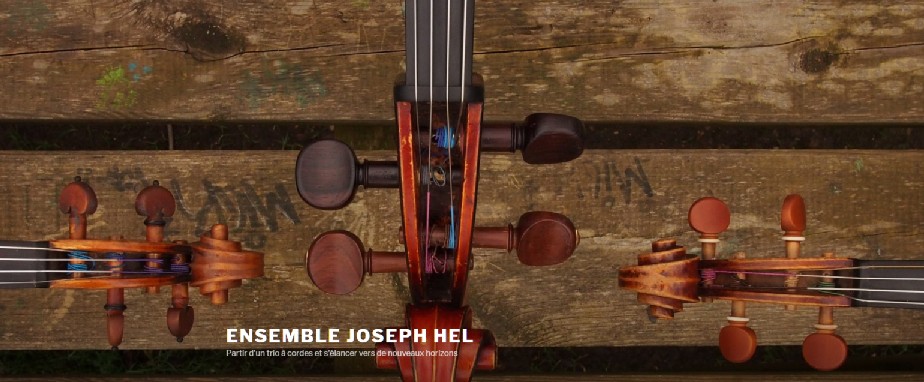
http://ensemble.triojosephhel.fr/
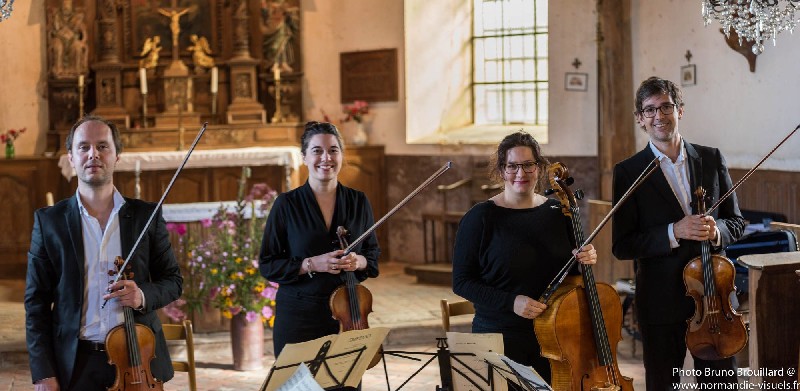
The musicians in the “Ensemble Joseph Hel” would not call themselves after him,
if they did not value the master and his instruments.
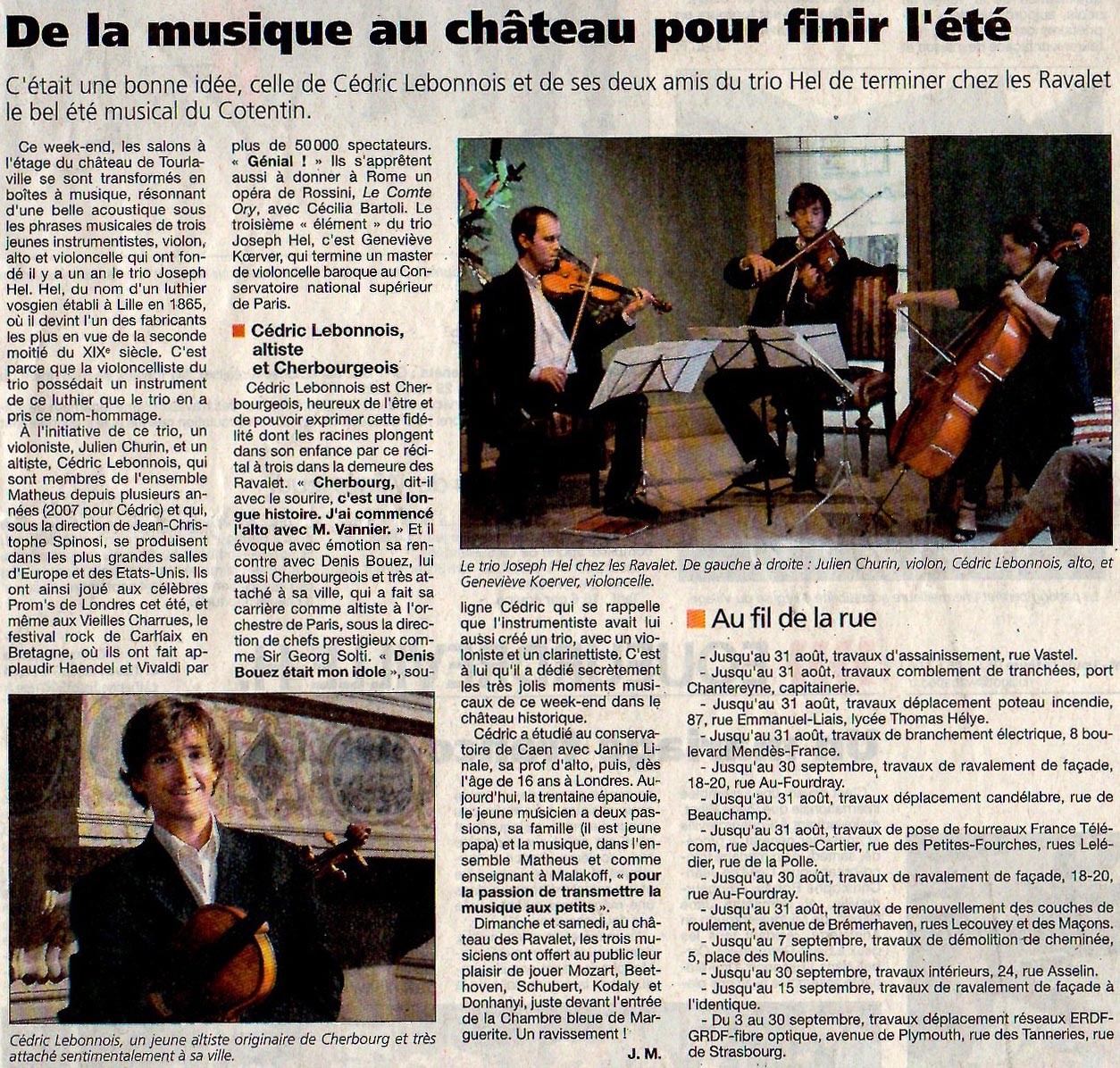
More about "Ensemble
Joseph Hel"
I am putting this out there and would be more than happy to add anyone’s
thoughts and experiences. Please do put an entry into the visitors’ book, no
matter how long or short! I would just love to know whether you have read my
page. Thank you very much!
Back to top
Your opinions and
experiences
Martin
McClean, violin maker in Northern Ireland:
"Dear Gerhard,
I've been meaning to contact you - simply to complement you on the website. I
don't have the time right now to give the question and your site the comment
that they deserve- and my comments mightn't be worth much regardless, however I
would like to throw a few ideas into the pot.
An allegedly superb Joseph Hel turned up in Ireland approximately twenty years
ago. It was.in excellent condition and from the early 1890s. It was bought by
arguably the top dealer and authority in the world at that time for £17000.00.
It was unstamped, this would have been a very high price considering the
instrument was for resale. This leads me to question the association of stamps
with quality. One obvious reason for stamping instruments is that the stamp is
permanent and can't be removed. Therefore we can say for certainty that these
instruments were made and sold as Joseph Hels.
However it was common practice at the time for makers to make instruments which
would be sold in other shops. Not stamping them would give the other shops or
makers (violin shops being closely associated with the luthier had ownership)
the discretion to sell a Hel as a Hel, or something else should the need or
opportunity arise!
Today this practice would probably be viewed as unethical, but then it may have
been viewed as a pragmatic and honest practice- it may not be that different
from what happened in the golden.age of Cremona - we detect various hands in the
work of Nicolo Amati for example. Bows from the bazin family also spring to
mind. I stamp my instruments, but I have been asked by another vary well
established maker to consider providing unstamped instruments. It's not
difficult to see why....! Perhaps the simplest explanation is the best,
regarding stamps at least.
The issue of medals is probably more complex, but it's still possible to provide
simple explanations. Perhaps he simply used whatever medal had most currency at
that time, or where a medal would be most meaningful.... a medal from Paris
might carry more kudos in the United States, than a medal from Liverpool. The
world was a more fractious place then, the use of medals from unfriendly or
unfashionable nations may have been a poor business decision.
In short we can probably surmise that the inclusion of medals was a marketing
decision. And marketing is partly about tailoring a product to a market, even if
the important decisions are often seemingly superficial and relevant to a
particular time and place. I'm sure you have considered and included some of
these ideas, your work seems remarkably thorough.
Thank you for your site and your emails. It's nice to be kept informed!"
10.02.2018
"Ich bin sehr glücklich mit dem Klang meiner Geige. Allerdings musste ich erst
die Saiten auswechseln und mich an die Besonderheiten gewöhnen. Anfangs war sie
wirklich nicht sehr geschmeidig. "Ein Schlag ins Gesicht" sagt mein
Geigenbauer."
01.03.2019
"Sehr geehrter Herr Wansleben,
durch Zufall bin ich auf Ihre sehr schön gestaltete Seite über Joseph Hel
gestoßen. Ich besitze eine Violine von Joseph Hel, die nicht nur einen
wunderbaren Klang hat, sondern auch eine besondere Geschichte .Ich konnte
folgendes recherchieren: Das Instrument wurde 1900 gebaut und trägt die No. 542.
Es wurde nach dem Tod von Joseph Hel noch lange im Besitz der Familie Hel
gehalten. Erst eine der Enkelinnen verkaufte das Instrument- mutmaßlich nach dem
Tod der Ehefrau von Pierre Hel 1957- an den amerikanischen Geiger David Sackson.
Sackson war nicht nur ein hervorragender Kenner des französischen Geigenbaus,
sondern in den1940er Jahren Leiter der Streichergruppe im Orchester von Glenn
Miller.
An der Richtigkeit der Angaben im mir vorliegenden Attest von Jacques Francais,
New York, von 1973 habe ich keinerlei Zweifel. David Sackson trennte sich aber
bereits zu Lebzeiten von dem Instrument und es gelangte zurück nach Europa. Seit
einigen Jahren befindet es sich jetzt in meinem Besitz." (Georg Sättler,
Rechtsanwalt und Notar in Hoya)
03.02.2020
"I own a "shoop Joseph Hel" which I feel has a wonderful tone. Are there
significant differences between a shop and a hand on instrument?" (Elliot,
amateur violinist)
25.07.2020
"Thank you, a very interesting site." (Marcus Beale, amateur violinist)
20.02.2022
"I own a Pierre Jean Henri Hel cello made in 1904. It's a very beautiful early
work of Pierre's, who was 20 when it was made. Gorgeous wood and fiery crimson
varnish. I'm having it restored at the moment. It has a great tone quality."
(Bernie Tamosaitis, Professional Cellist)
16.06.2022
"I play a very late Pierre Hel which has a very beautiful tone."
(Liebhaber /amateur)
Impressum
Gerhard Wansleben, Düsseldorf
gerhard@wansleben.de
You can visit our website without providing any personal information. Each time
a website is called up, the web server automatically and inevitably saves a so-called
server log file, which contains e.g. the name of the requested file, your IP
address, date and time of the call, amount of data transferred and the
requesting provider (access data) and the call documented. We do not collect any
additional personal data and do not pass on IP related data.
We do not use so-called cookies and do not operate any form of web analysis. We
also refrain from using Google (Universal) Analytics for web analysis. We do not
use social plugins from Facebook, Twitter, Instagram.
The entry in the guest book is transferred to a secure Excel file and accepted
without further processing of the data. The reproduction of an entry on this
page is done manually.
If you have any questions regarding data protection and our website, please
contact us directly using the contact details above. Thank you for your interest
in our website!